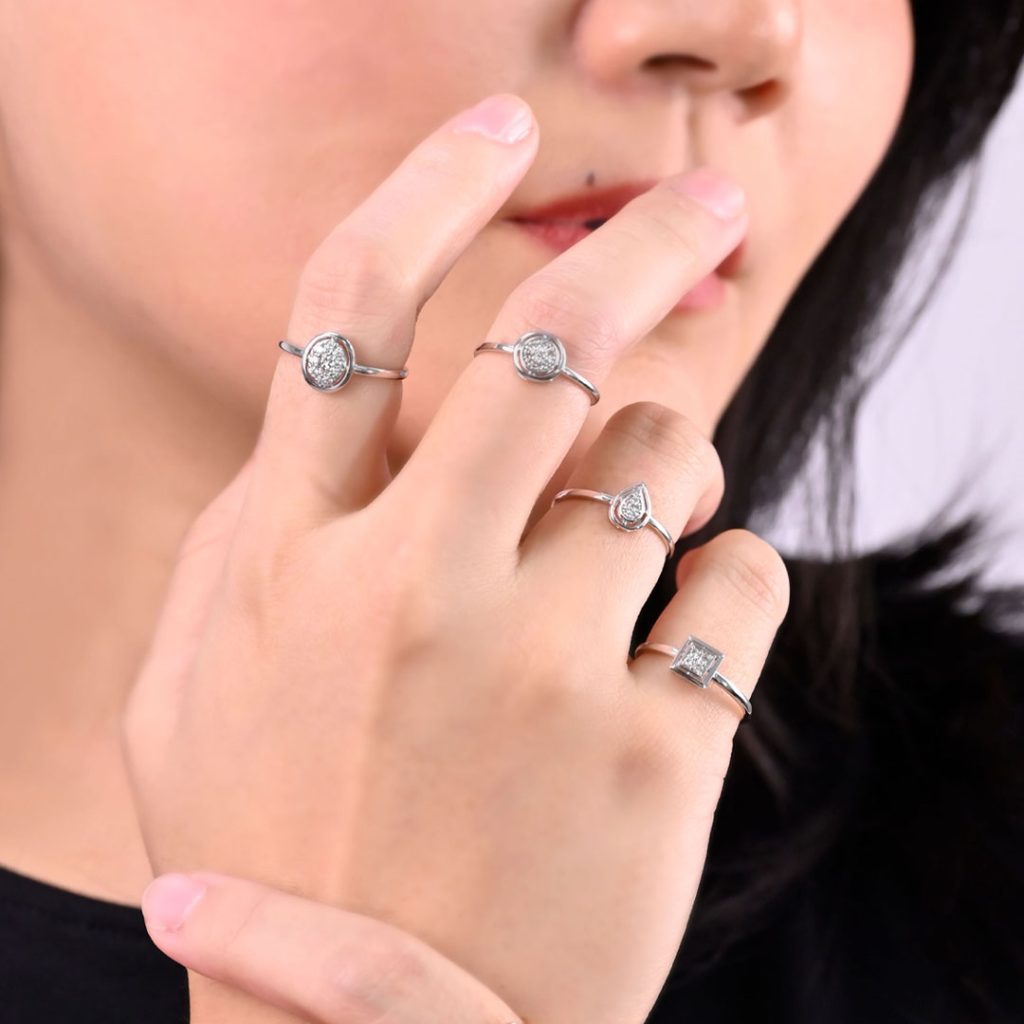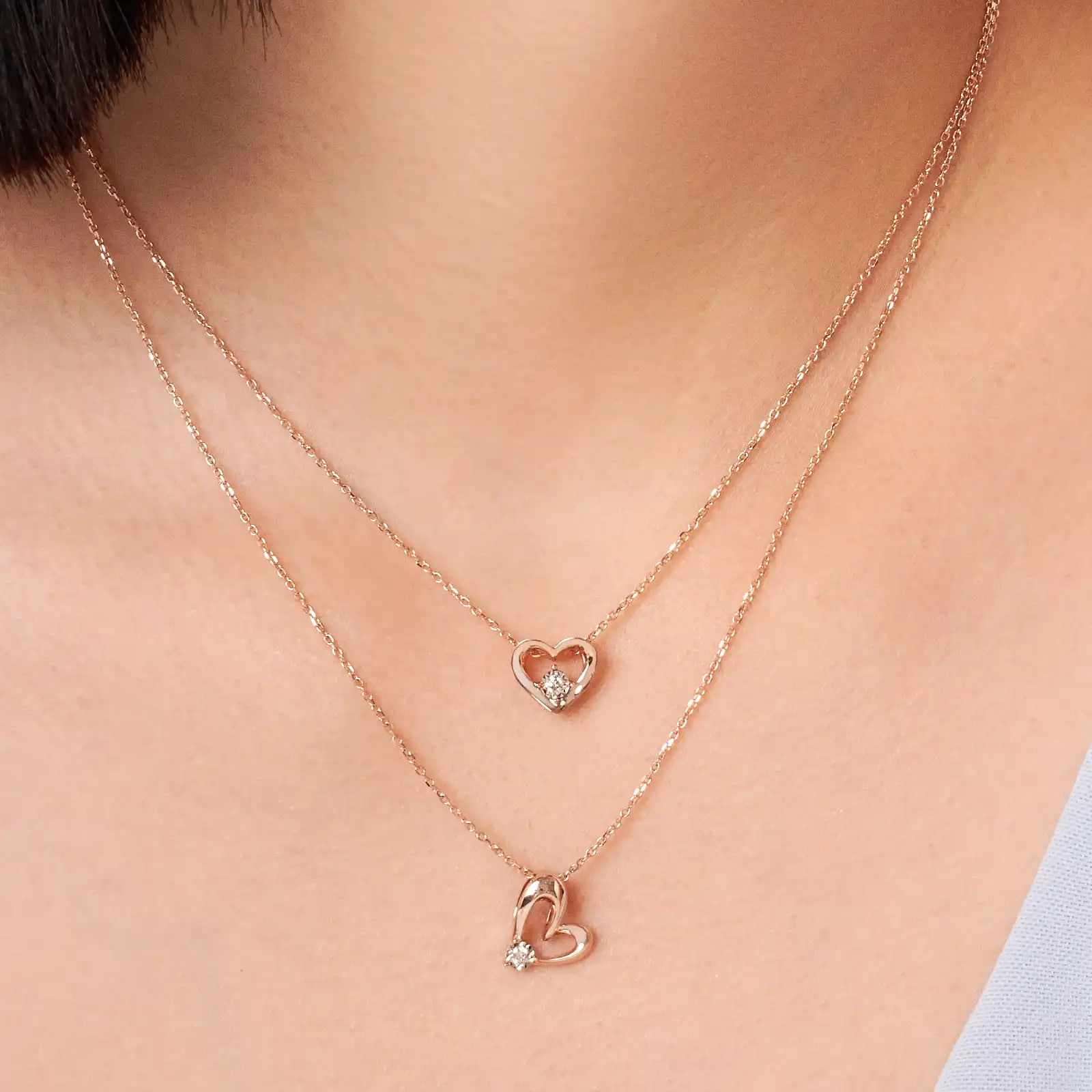Gold jewellery isn’t just an accessory—it’s a reflection of personal style, heritage, and personality. Whether you’re inclined towards yellow, white, or rose gold, knowing the distinct attributes of each type can help you make the best choice. Let’s dive into what makes each one special.
Yellow Gold
Yellow gold, the most classic form of gold, has been valued for its natural warm hue. While pure gold, known as 24K, is too soft for everyday wear, it gains strength when alloyed with metals like silver, copper, or platinum. This mixture improves its durability and makes it suitable for crafting stunning jewellery. The karat value—such as 18K or 14K—indicates the proportion of pure gold in the alloy. For example, 18K gold is made up of 75% pure gold, while 14K contains 58.3%.
In Malaysian culture, yellow gold holds deep significance across communities. Traditional Malay wedding ceremonies feature bold yellow gold designs symbolising prosperity and heritage, while Indian celebrations honour yellow gold as an auspicious metal representing blessings and good fortune.
For premium Malaysian gold craftsmanship, explore our 916/22K gold jewellery featuring traditional purity standards.
White Gold
White gold is produced by combining pure gold with other light-coloured metals such as palladium, silver, nickel, and zinc. This blend creates a pale colour that resembles platinum. Often, white gold is coated with a rhodium layer—an element in the platinum family—that enhances its bright shine and provides a hypoallergenic barrier.
However, the rhodium coating does wear off over time, requiring periodic re-plating to maintain the bright white look.
Discover sophisticated contemporary designs in our 18K white gold jewellery collection.
Rose Gold
Rose gold gets its distinctive pinkish tint from the addition of copper in the gold alloy. The intensity of the pink shade depends on the copper content, with a higher amount resulting in a deeper hue. Originally called “Russian Gold,” rose gold rose to prominence in the 1800s and enjoyed renewed popularity worldwide in the 1920s and the 2000s.
Rose gold’s copper content makes it resistant to scratches, lending it exceptional durability and a romantic vintage charm. Among Malaysia’s younger generation, rose gold represents modern romance and individual expression, making it the preferred choice for casual daily jewellery and fashion-forward gifts that reflect personal style over conventional expectations.
Experience the warm elegance of our 18K rose gold jewellery showcasing this romantic metal.
Comparing Yellow, White, and Rose Gold
Rose gold, containing copper, is the most durable but may irritate those with copper sensitivities. White gold is plated with rhodium to achieve its white colour and needs re-plating to maintain its look. Yellow gold is the most traditional, requiring only occasional polishing for shine. The price for all three is primarily determined by the karat, which signifies the gold content.
A. Skin Tone Compatibility
Choosing the right gold type can depend on how it complements your skin tone. Warm skin tones are generally complemented by yellow and rose gold, while cool skin tones often look best with white gold. Those with neutral skin tones have the versatility to wear any of these shades beautifully.
B. Hypoallergenic Qualities
Yellow gold, especially in its purer forms, is typically the least likely to cause allergic reactions due to its lower proportion of additional metals. White gold, however, can contain nickel, which is a common allergen. Although rhodium plating reduces skin contact with nickel, it eventually wears away. Rose gold’s copper content may also cause irritation for individuals with copper sensitivities.
C. Durability and Maintenance
The durability of gold jewellery varies by alloy. Rose gold is considered the most durable due to the strength provided by copper. White gold, while durable, needs regular rhodium re-plating to maintain its bright white colour. Yellow gold, although less durable than rose gold, requires occasional polishing to keep its shine.
D. Style and Trends
Each colour of gold brings its own aesthetic. Yellow gold symbolises tradition and timeless elegance. White gold, a more recent favourite, provides a modern, chic appearance, while rose gold, with its warm and romantic hue, evokes vintage charm and appeals to those looking for something different.
E. Price Considerations
The price of gold jewellery is primarily driven by its karat rating, which denotes the proportion of pure gold. Higher karat gold like 18K is more expensive compared to 14K because it contains a larger percentage of gold. The colour—whether yellow, white, or rose—doesn’t influence the inherent value of the gold alloy.
Which Gold Type Suits You?
Selecting the perfect gold type depends on your lifestyle, preferences, and specific occasions. Here are common scenarios to guide your choice:
| If You Are… | Go For… | Why |
| Getting married the traditional way | Yellow Gold | Rich, symbolic, and culturally respected across Malaysian communities |
| A style-forward young woman | Rose Gold | Unique, warm, and trend-savvy choice that reflects modern romance |
| Buying an engagement ring | White Gold | Sleek, timeless, and pairs beautifully with diamonds |
| Sensitive to metals | Higher-karat Yellow Gold | Fewer alloy metals mean reduced risk of skin irritation |
| Buying everyday jewellery | Rose or White Gold | Durable, versatile, and trendy options for daily wear |
Conclusion
Whether it’s the timeless allure of yellow gold, the contemporary sophistication of white gold, or the romantic warmth of rose gold, Wah Chan offers exquisite jewellery for every taste. Explore Wah Chan’s collection of jewellery in Malaysia, and discover the perfect piece that complements your style.
FAQ
What are the most popular types of gold?
Yellow gold, white gold, and rose gold are the most popular types of gold for jewellery. Yellow gold is a traditional choice, while white gold is a trendy and modern option. Rose gold offers a romantic and fashionable aesthetic.
Why are different alloy metals added to pure gold?
Pure gold is a soft metal, so it is alloyed with stronger metals like copper, silver, palladium, and zinc to increase its durability. This makes the precious metal suitable for use in jewellery. Different alloys also create a wide range of colored gold options, like white gold or pink gold.
Which type of gold is best for sensitive skin?
The additional metals in the alloy, such as copper, can trigger allergic reactions in some people. For example, white gold rings can cause reactions due to the nickel in the white gold alloy, but rhodium plating helps. On the other hand, people may have a reaction to the copper in rose gold.
What is the most durable metal for engagement rings and wedding rings?
Rose gold, a gold with copper added, is the most durable type of gold, making it a great choice for engagement and wedding rings. White gold engagement rings are also a popular choice, although the rhodium plating will require maintenance. The choice ultimately comes down to personal preference.


